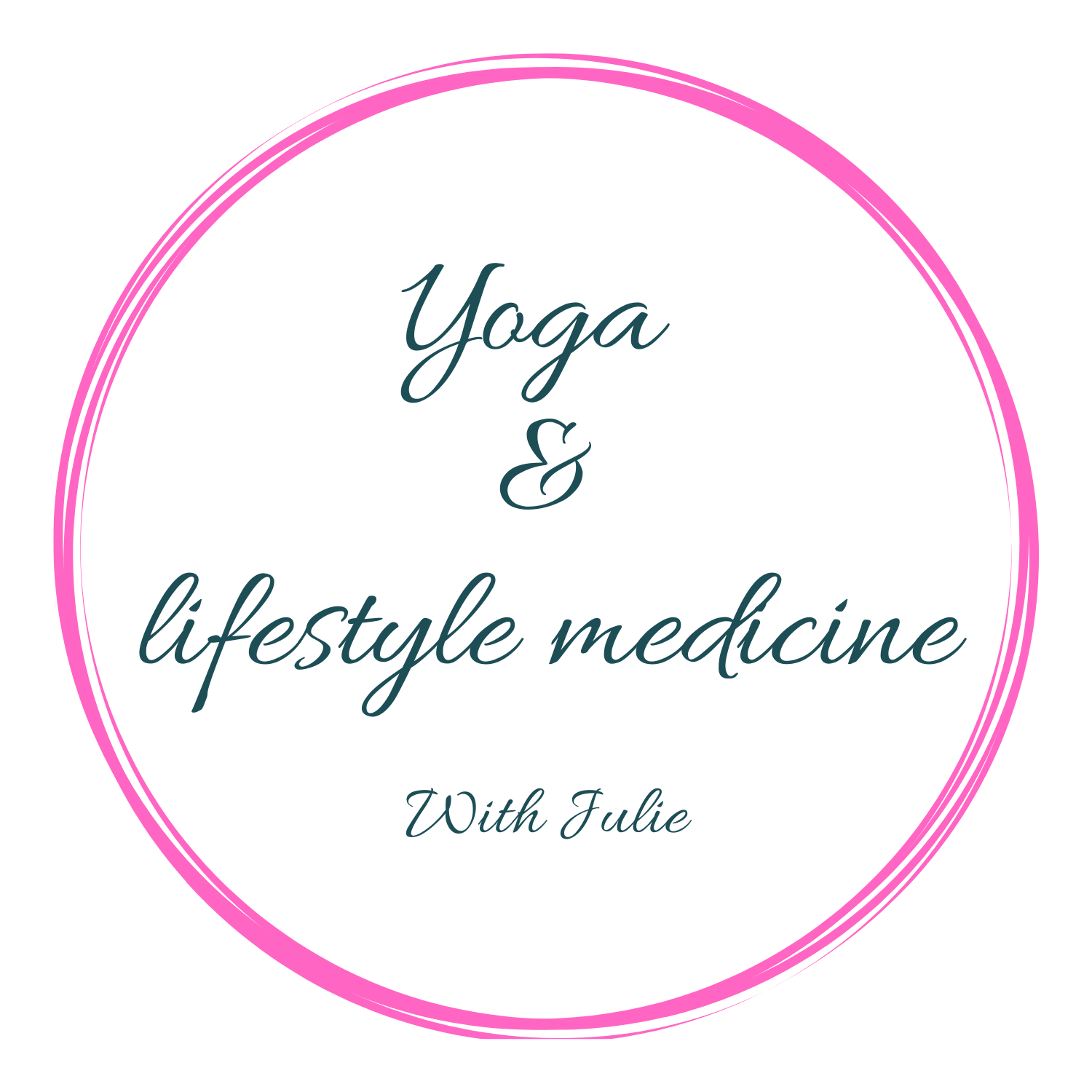Pranayama breathing is generally defined as breath control. Although this interpretation may seem correct in view of the practices involved, it does not convey the full meaning of the term.
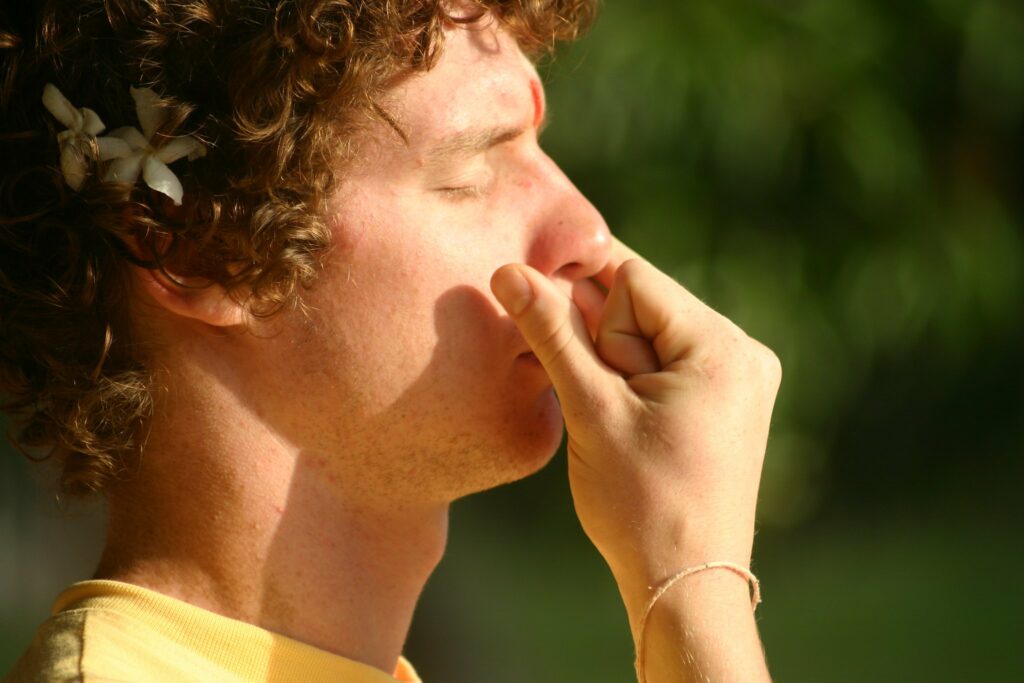

The word pranayama is comprised of two roots: ‘prana’ plus ‘ayama‘.
Prana means ‘vital energy’ or ‘life force’. It is the force which exists in all things, whether animate or inanimate.
Although closely related to the air we breathe, it is more subtle than air or oxygen.
Therefore, pranayama should not be considered only as breathing exercises aimed at introducing extra oxygen into the lungs. Pranayama uses breathing to influence the flow of prana in the nadis or energy channels of the pranamaya koshas or energy body.
The word yama means ‘control’ and is used to denote various rules or codes of conduct.
However, this is not the word which is joined to prana to form pranayama; the correct word is ‘ayama’ which has far more implications.
Ayama is defined as ‘extension’ or ‘expansion’. Thus, the word pranayama means ‘extension or expansion of the dimension of prana’ .
The techniques of pranayama provide the method whereby the life force can be activated and regulated in order to go beyond one’s normal boundaries or limitations and attain a higher state of vibratory energy and awareness.
Four aspects of pranayama
In the pranayama practices there are for important aspects of breathing which are used.
These are:
1 . Pooraka or inhalation
2. Rechaka or exhalation
3 . Antar kumbhaka or internal breath retention
4. Bahir kumbhaka or external breath retention.
The different practices of pranayana involve various techniques which use these four aspects of breathing.
There is another mode of pranayama, which is called kevala kumbhaka or spontaneous breath retention. This is an advanced stage of pranayama which occurs during high states of meditation.
During this state, the fluctuation of prana ceases. At this time, the veil which prevents one from seeing the subtle aspect of existence is lifted and a higher vision of reality is attained.
The most important part of pranayama is actually kumbhaka or breath retention. However, in order to perform kumbhaka successfully, there must be a gradual development of control over the function of respiration.
Therefore, in the pranayama practices more emphasis is given to inhalation and exhalation at the beginning, in order to strengthen the lungs and balance the nervous and pranic systems in preparation for the practice of kumbhaka. These initial practices influence the flow of prana in the nadis, purifying, regulating and activating them, thereby inducing physical and mental stability.
The pranic body
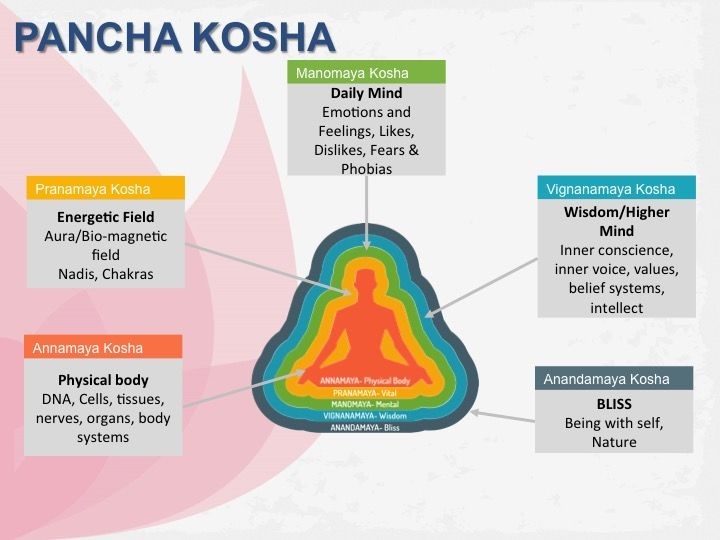

Five koshas
According to yogic physiology, the human framework is comprised of five bodies or sheaths, which account for the different aspects or dimensions of human existence. These five sheaths are known as:
1. Annamaya kosha, the food or material body
2. Manomaya kosha, the mental body
3. Pranamaya kosha, the bioplasmic or vital energy body
4. Vijnanamaya kosha, the psychic or higher mental body
5. Anandamaya kosha, the transcendental or bliss body.
Although these five sheaths function together to form an integral whole.
The practices of pranayama work mainly with pranamaya kosha.
Pranamaya kosha is made up of five major pranas, which are collectively known as the pancha, or five pranas: prana, apana, samana, udana and vyana.
The pranas
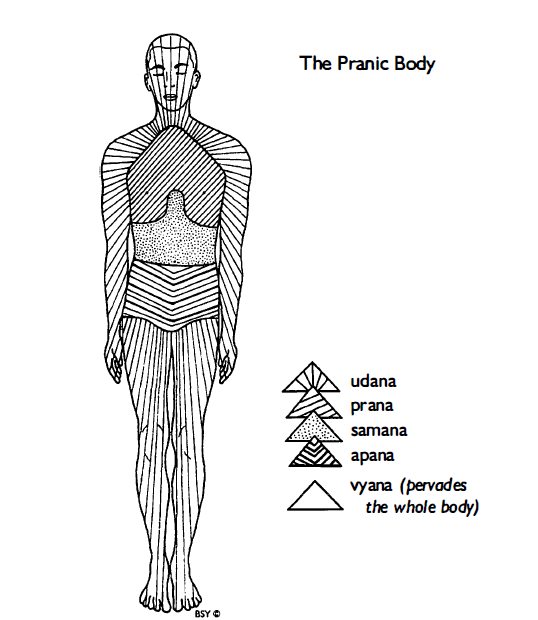

Prana does not refer to cosmic prana, but rather to just one flow of energy, governing the thoracic area between the larynx and the top of the diaphragm. It is associated with the heart and organs of respiration together with the muscles and nerves that activate them. It is the force by which the breath is drawn inside.
Apana governs the abdomen, below the navel region, and provides energy for the large intestine, kidneys, anus and genitals. It is concerned with the expulsion of waste from the body and is the force which expels the breath.
Samana is located between the heart and the navel. It activates and controls the digestive system: the liver, intestines, pancreas and stomach, and their secretions. Samana is responsible for transformation. On a physical level this relates to the assimilation and distribution of nutrients. On an evolutionary level it relates to kundalini and expansion of consciousness.
Udana governs the neck and head, activating all the sensory receptors such as the eyes, tongue, nose and ears. U dana also harmonizes and activates the limbs and all their associated muscles, ligaments, nerves and joints. It is responsible for the erect posture of the body, sensory awareness, and the ability to respond to the outside world.
Vyana pervades the whole body, regulating and controlling all movement, and coordinating the other pranas. It acts as the reserve force for the other pranas.
Along with these five major pranas there are five minor pranas known as the upa-pranas : naga, koorma, krikara, devadatta and dhananjaya.
Naga is responsible for belching and hiccups.
Koorma opens the eyes and stimulates blinking.
Krikara generates hunger, thirst, sneezing and coughing.
Devadatta induces sleep, yawning.
Dhananjaya lingers after death and upon its departure, decay and decomposition of the body begins to happen.
Prana and lifestyle
Lifestyle has a profound impact on the pranamaya kosha and its pranas.
Physical activities such as exercise, work, sleep, intake of food and sexual relations all affect the distribution and flow of prana in the body.
Faculties of the mind such as emotion, thought, imagination affect the pranic body even more.
Irregularities in lifestyle, dietary indiscretions and stress deplete and obstruct the pranic flow. This results in what people experience as being “drained of energy”.
Depletion of energy in a particular prana leads to the devitalization of the organs and limbs it governs and ultimately to disease or metabolic dysfunction. The techniques of pranayama reverse this process, energizing and balancing the different pranas within pranamaya kosha .
Pranayama practices should be performed after asanas in an integrated yoga program.
Breath, health and pranayama
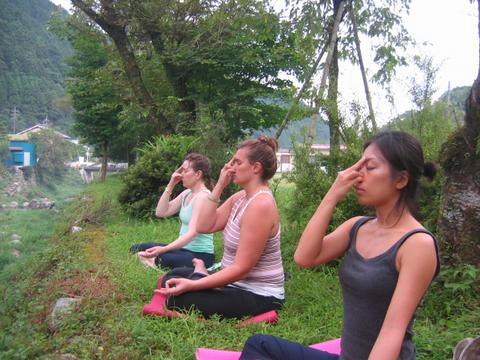

The breath is the most vital process of the body. It influences the activities of each and every cell and, most importantly, is intimately linked with the performance of the brain. Human beings breathe about 15 times per minute and 21600 times per day.
Respiration fuels the burning of oxygen and glucose, producing energy to power every muscular contraction, glandular secretion and mental process. The breath is intimately linked to all aspects of human experience.
Most people breathe incorrectly, using only a small part of their lung capacity. The breathing is then generally shallow, depriving the body of oxygen and prana essential to its good health.
The first five practices given in this section are preparatory techniques which introduce correct breathing habits. In addition, they help focus the awareness on the breathing process, which is otherwise normally ignored.
Practitioners develop sensitivity to the respiratory process and retrain the muscles of the pulmonary cavity, enhancing their vital capacity and preparing them for pranayama.
Rhythmic, deep and slow respiration stimulates and is stimulated by calm, content, states of mind.
Irregular breathing disrupts the rhythms of the brain and leads to physical, emotional and mental blocks. These, in turn, lead to inner conflict, an unbalanced personality, a disordered lifestyle and disease.
Pranayama establishes regular breathing patterns, breaking this negative cycle and reversing the debilitating process. It does so by giving us control of the breath and reestablishing the natural, relaxed rhythms of the body and mind.
Although breathing is mainly an unconscious process, conscious control of it may be taken at any time. Consequently, it forms a bridge between the conscious and unconscious areas of the mind. Through the practice of pranayama, the energy trapped in neurotic, unconscious mental patterns may be released for use in more creative and joyful activity.
Breathing and life span
In addition to influencing the quality of life, the length or quantity of life is also dictated by the rhythm of the respiration.
The ancient yogis and rishis studied nature in great detail. They noticed that animals with a slow breath rate such as pythons, elephants and tortoises have long life spans, whereas those with a fast breathing rate such as birds, dogs and rabbits live for only a few years.
From this observation they realized the importance of slow breathing for increasing the human lifespan. Those who breathe in short, quick gasps are likely to have a shorter life span than those who breathe slowly and deeply. On the physical level, this is because the respiration is directly related to the heart.
A slow breathing rate keeps the heart stronger and better nourished and contributes to a longer life. Deep breathing also increases the absorption of energy by pranamaya kosha, enhancing dynamisn1, vitality and general well-being.
Pranayama and the spiritual aspirant
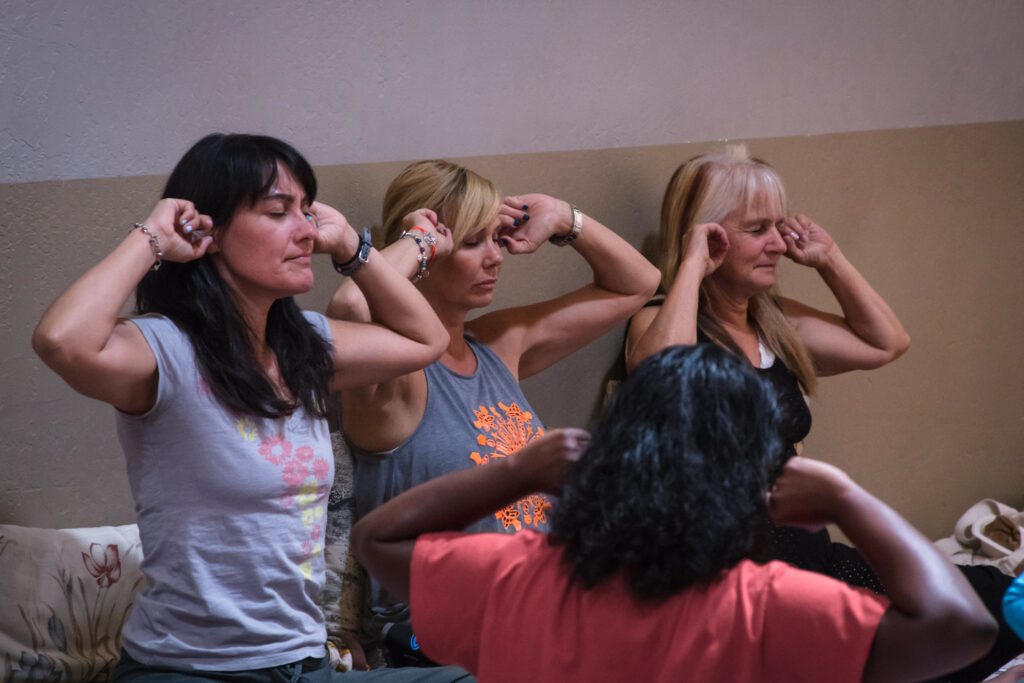

Pranayama practices establish a healthy body by removing blockages in the pranamaya kosha, enabling increased absorption and retention of prana.
The spiritual seeker requires tranquillity of mind as an essential prelude to spiritual practice.
To this end, many pranayanma techniques use kumbhaka, breath retention, to establish control over the flow of prana, calming the mind and controlling the thought process. Once the mind has been stilled and prana flows freely in the nadis and chakras, the doorway to the evolution of consciousness opens, leading the aspirant into higher dimensions of spiritual experience.
In The Science of Pranayama, Swami Sivananda writes, “There is an intimate connection between the breath, nerve currents and control of the inner prana or vital forces. Prana becomes visible on the physical plane as motion and action, and on the mental plane as thought.
Pranayama is the means by which a yogi tries to realize within his individual body the whole cosmic nature, and attempts to attain perfection by attaining all the powers of the universe.”
General notes for the practitioner
In the traditional texts, there are innumerable rules and regulations pertaining to pranayama. The main points are to exercise moderation, balance and common sense with regard to inner and outer thinking and living. However, for those who seriously wish to take up the advanced practices of pranayama, the guidance of a guru or competent teacher is essential.
Contra-indications:
Pranayama should not be practiced during illness, although simple techniques such as breath awareness and abdominal breathing in shavasana may be performed. Carefully observe the contra-indications given for individual practices.
Time of practice:
The best time to practise pranayama is at dawn, when the body is fresh and the mind has very few impressions. If this is not possible, another good time is just after sunset.
Tranquillizing pranayamas may be performed before sleep. Try to practise regularly at the same time and place each day. Regularity in practice increases strength and willpower as well as acclimatizing the body and mind to the increased prank force. Do not be in a hurry, be slow and steady
Progression is essential.
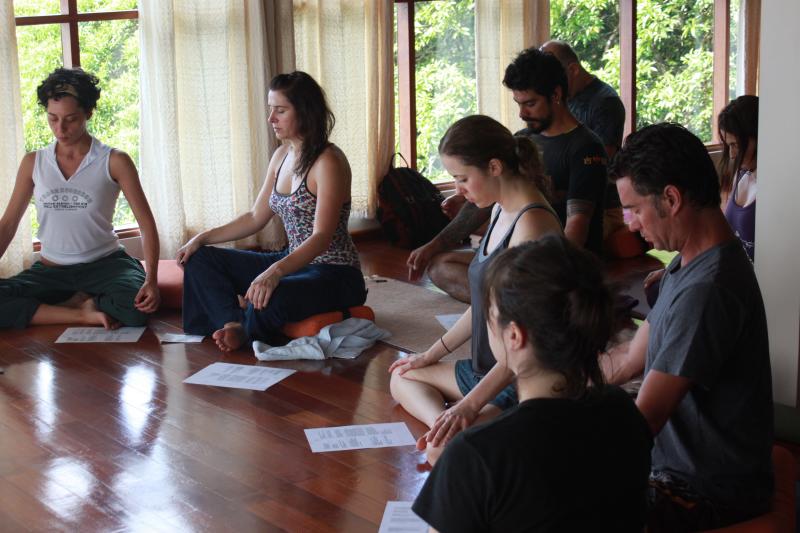

Bathing:
Take a bath or shower before commencing the practice, or at least wash the hands, face and feet. Do not take a bath for at least half an hour after the practice to allow the body temperature to normalize.
Clothes: Loose, comfortable clothing made of natural fibres should be worn during the practice. The body may be covered with a sheet or blanket when it is cold or to keep insects away.
Empty stomach: Practise before eating in the morning or wait at least three to four hours after meals before starting pranayama. Food in the stomach places pressure on the diaphragm and lungs, making full, deep respiration difficult.
Diet: A balanced diet of protein, carbohydrates, fats, vitamins and minerals is suitable for most pranayama practices. A combination of grains, pulses, fresh fruit and vegetables, with some milk products if necessary; is recommended. When commencing pranayama practice, constipation and a reduction in the quantity of urine may be experienced.
In the case of dry motions, stop taking salt and spices, and drink plenty of water. In the case of loose motions, stop the practices for a few days and go on a diet of rice and curd or yoghurt.
The more advanced stages of pranayama require a change in diet and a teacher should be consulted for guidance on this.
Place of practice:
Practice in a quiet, clean and pleasant room, which is well ventilated but not draughty. Generally, avoid practising in direct sunlight as the body will become over-heated, except at dawn when the soft rays of the early morning sun are beneficial. Practising in a draught or wind, in air-conditioning or under a fan may upset the body temperature and cause chills.
Breathing: Always breathe through the nose and not the mouth unless specifically instructed otherwise. Both nostrils must be clear and flowing freely. Mucous blockages may be removed through the practice of neti or kapalbhati. If the flow of breath in the nostrils is unequal, it may be balanced by practising padadhirasana as a breath balancing technique.
Sequence:
Pranayama should be performed after shatkarmas and asanas, and before meditation practice. Nadi shodhana pranayama should be practised in each pranayama session as its balancing and purifying effects form the basis for successful pranayama. Mter practising pranayama, one may lie down in shavasana for a few minutes.
Sitting position: A comfortable, sustainable meditation posture is necessary to enable efficient breathing and body steadiness during the practice. Siddha/siddha yoni asana or padmasana are the best postures for pranayama. The body should be as relaxed as possible throughout the practice with the spine, neck and head erect. Sit on a folded blanket or cloth of natural fibre to ensure the maximum conduction of energy during the practice. Those who cannot sit in a meditation posture may sit against a wall with the legs outstretched or in a chair which has a straight back.
Avoid strain:
With all pranayama practices, it is important to remember that the instruction not to strain, not to try to increase your capacity too fast, applies just as it does to asana practice. If one is advised to practise a pranayama technique until it is mastered, and it can be practised without any strain or dicomfort, it is wise to follow that instruction before moving on to a more advanced practice or ratio. Furthermore, breath retention should only be practised for as long as is comfortable.
The lungs are very delicate organs and any misuse can easily cause them injury. Not only the physical body, but also the mental and emotional aspects of the personality and need time to adjust. Never strain in any way.
Side effects:
Various symptoms may manifest in normally healthy people. These are caused by the process of purification and the expulsion of toxins. Sensations of itching, tingling, heat or cold, and feelings of lightness or heaviness may occur.
Such experiences are generally temporary, but if they persist, check with a competent teacher. Energy levels may increase or fluctuate; interests may change. If such changes cause difficulty in lifestyle, decrease or stop the practice until a competent teacher or guru gives guidance.
I cannot explain here all the health and scientifically proven benefits of pranayama. And what pranayama is practiced to improve or cure diseases. That will be the subject of another article.
I am always here to help you in your practice, ask me your questions or book a one-one with me if you want to learn, make your health the priority. and if you want to develop your skills.
Be safe, be love and nice.
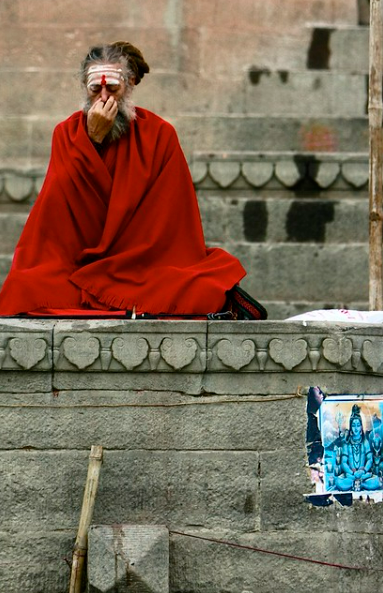

References:
Exploring the Therapeutic Benefits of Pranayama (Yogic Breathing): A Systematic Review
Exploring the therapeutic effects of yoga and its ability to increase quality of life
Effects of various Praṇayama on cardiovascular and autonomic variables.
